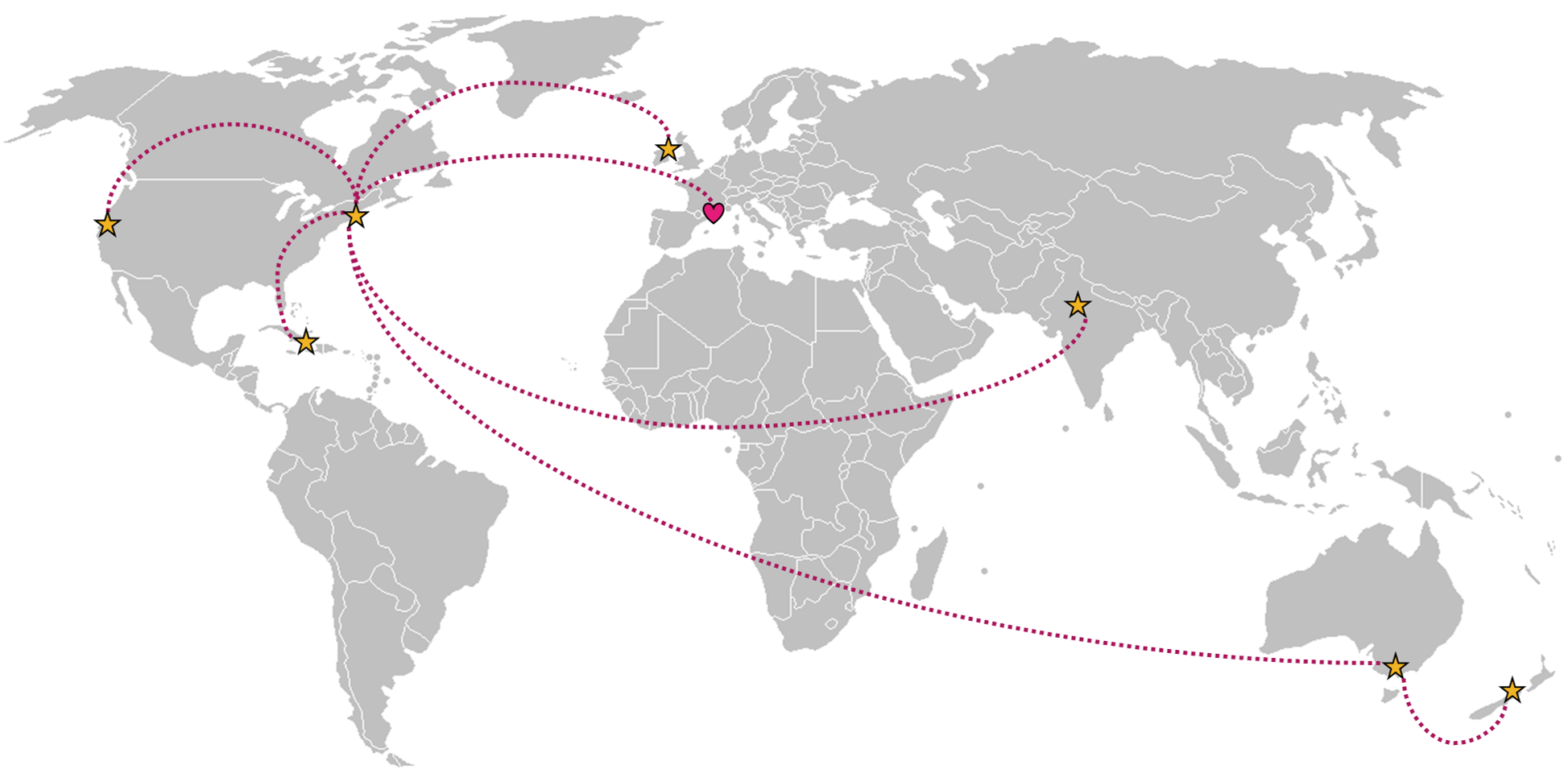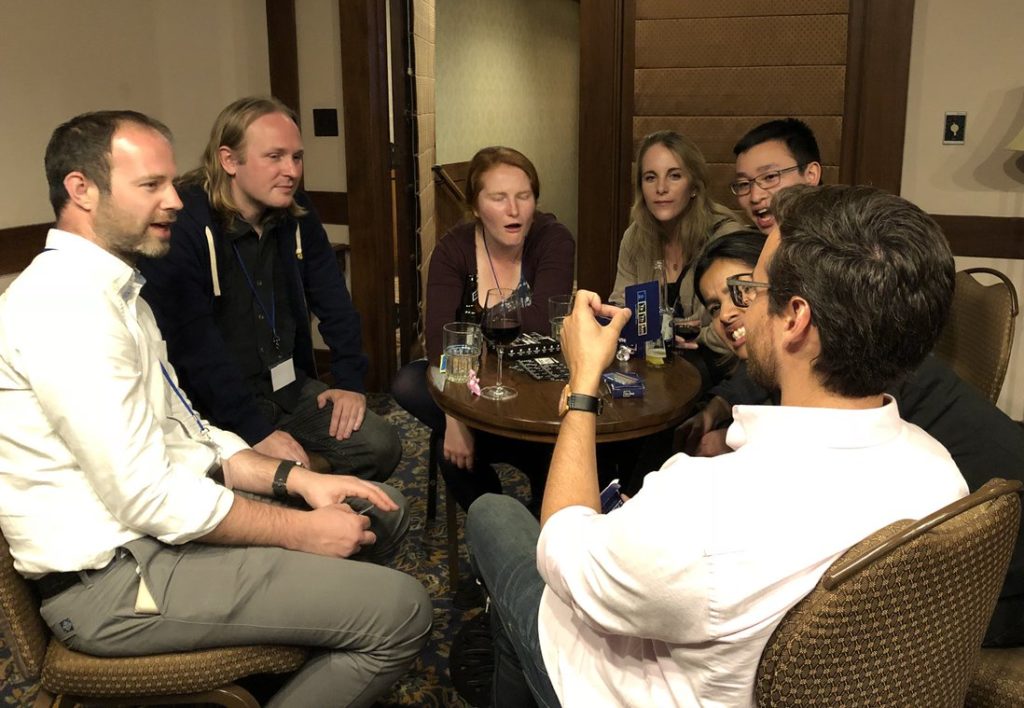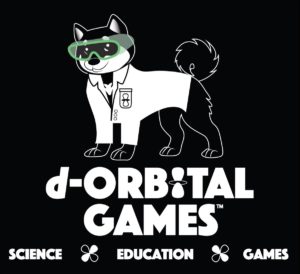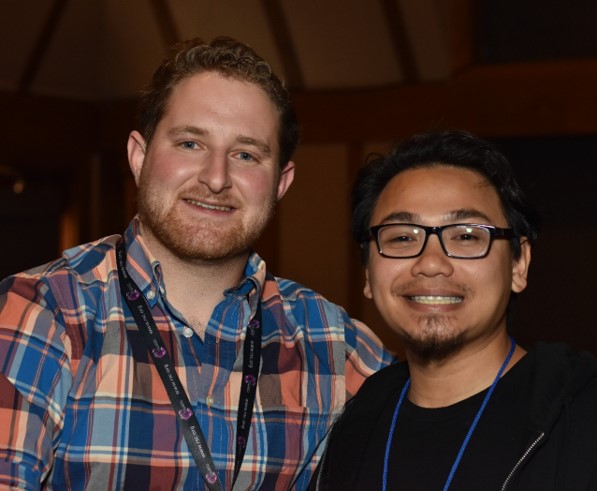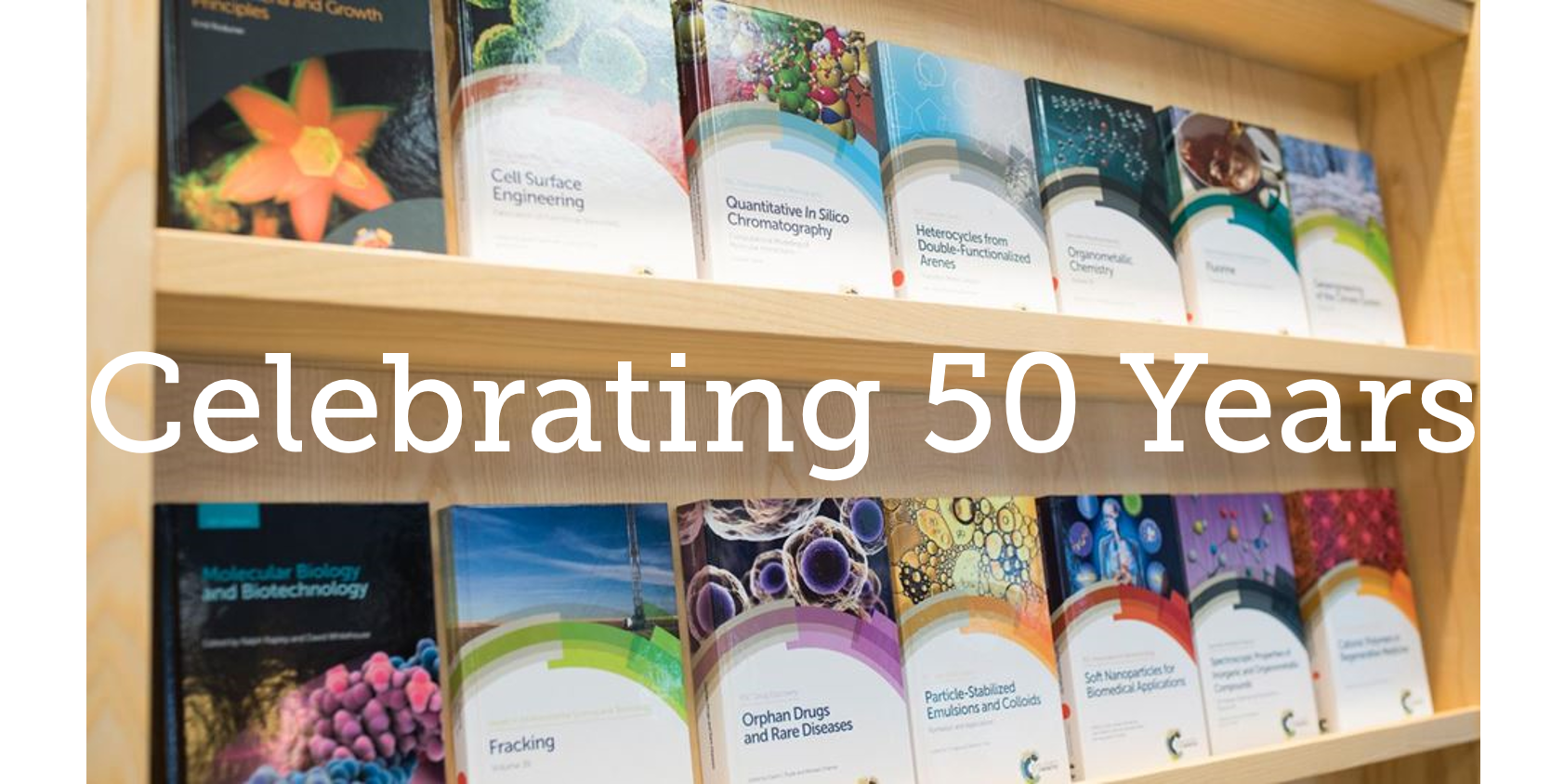
This month, the Royal Society of Chemistry is celebrating its Golden Anniversary of Books, marking 50 years since the publication of the first book in our Specialist Periodical Reports series. With titles spanning the breadth of the chemical sciences for a variety of audiences, from popular science books to textbooks to professional reference books, the books program continues to thrive thanks to contributions from our international community. The RSC’s portfolio of textbooks provide an approachable and engaging suite of books for all students of the chemical sciences, from the fundamentals of organic, inorganic and physical chemistry to the frontiers of knowledge in pharmaceutical development and forensic science. The high-quality content of our books enables us to fully support learners and contribute to the development of the next generation of professional chemists. We are keen to understand how you find, access and read electronic (digital) non-fiction books in a professional or academic context, and would appreciate your insights through this short survey that will be available through December 15th, 2018. Please join us in celebrating 50 years of books, made possible by our outstanding authors, and read on to learn more about two who recently finished their second book with us.
Meet the Authors of Our Newest Book


We recently published a brand new textbook from two California-based co-authors and leading educators, Professor Christopher Walsh, from Stanford University and Professor Yi Tang from the University of California, Los Angeles. Their new textbook, Chemical Biology of Human Vitamins, is now the second that they have authored together with the RSC. Professor Walsh and Professor Tang are happy to share their new book with the world, and gave us some insights into their motivations and strategies for writing it, and explain what makes this such a fascinating and timely topic. Christopher Walsh’s research has focused on enzymes and enzyme inhibitors, and specifically on antibiotics and biosynthesis of biologically and medicinally active natural products. He has extensive academic leadership and biotechnology industry experience and is a member of the National Academy of Sciences, National Academy of Medicine, the American Academy of Arts and Sciences, and the American Philosophical Society. In 2010, he received the Welch Award in Chemistry for his pioneering work in biological chemistry along with co-recipient JoAnne Stubbe. Yi Tang holds joint appointments in the Department of Chemistry and Biochemistry and the Department of Bioengineering at UCLA. He has received numerous accolades, including the Arthur C. Cope Scholar Award and the Eli Lilly Award in Biological Chemistry.
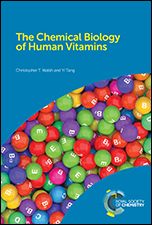
Over many decades, scientists discovered thirteen essential molecules that humans lost the capacity to make as they evolved from primordial organisms. These thirteen vitamins are crucial for metabolism, and this book chemocentrically analyzes the mode of action of each one of them to tell a compelling tale of the challenges that every human cell faces. It provides a thorough view on the key small molecules of life, the human vitamins and their active coenzyme forms. Detailing how their unique chemistries control the interconversion and the flux of hundreds of central human metabolites, Chemical Biology of Human Vitamins examines the parallel and convergent tracks of the vitamins and their coenzyme forms.
With these two leading educators bringing their talents and expertise to the table, Chemical Biology of Human Vitamins aims to serve as an ideal guide and reference point for chemists in both academia and industry, graduates and advanced undergraduate students in biochemistry, chemical biology, metabolism and metabolomics, with beautifully crafted artwork to complement the cogent and engaging explanations. Professor Walsh explains, “Since the artwork is so much of the communicated message, we work hard to get that right, with clarity and as much elegance as we can.”
Highly Efficient Teamwork
The two professors first met while Tang was a postdoc with Chaitan Khosla. “We had our PKS/NRPS (polyketide synthetase/non-ribosomal peptide synthetase) super group meetings every year,” says Tang. “Chris was very friendly and open to everyone, including me. I started collaborating with Chris as an independent PI in 2010. We worked on the biosynthesis of fungal indole alkaloids and nonribosomal peptides.” In 2016, they started collaborating on their first book, Natural Product Biosynthesis: Chemical Logic and Enzymatic Machinery, which was published the following year; that same year, in 2017, they also started working on their newest book, Chemical Biology of Human Vitamins, which was published earlier this fall. Now with two full textbooks completed in only two years, it is evident that these authors work very well together. They explained that balancing the workload was key to making such speedy progress. “We collaborated on different aspects of the book; Chris was mainly the writer for the text, while I worked on the figures, proofread the documents and prepared the references,” says Professor Tang. Professor Walsh explained why this system is most effective during the process: “I focus on writing a chapter at a time coincident with the artwork so that the text follows the information to be displayed in the figures,” he says. “Otherwise we have to go back and rewrite the text to match how any given figure turns out, and that is tedious with over 200 pieces of ChemDraw artwork in a book.”
A book often requires a great deal of dedication, and Professor Walsh explained how he works through the writing process to assemble the final product. “I tend to write straight through a project, starting before breakfast to capture early morning ideas. I pause when a major section or chapter is finished and only when I know how to start the next topic. I write to the exclusion of almost every other activity and can write a chapter a week with embedded artwork in first draft. The first draft goes to my coauthor Prof Tang for additions, omissions, corrections, deletions, and most importantly setting the tone and aesthetics of each chapter.” The editorial staff at the RSC were impressed with how quickly these authors were able to work, often beating target deadlines and finishing ahead of schedule. “It was an efficient arrangement and we were able to get through each book in about eight months,” says Professor Tang.
Planning for an Effective Textbook
Once committed and with clear intentions in mind, they were able to finish with impressive haste, but it took a bit more time and a great deal of thought to get to the point where they could really take off. Both authors have previous experience with writing books, which helped make it easier to develop an idea and a plan. “This is the sixth book that I have written, the last two with co-author Professor Tang of UCLA,” says Walsh. “For about a year and a half I had a one page summary of the structures of the vitamins sitting on my office desk with the vague intent that the topic might be worth examining.” He explained what motivated him as an author and what he aims to accomplish with this work. “The prime motivation in each case, and this one in particular,” says Walsh, “is first to explain the topic to myself/ourselves, and then to others with some clarity about the chemical logic that underpins the role of key molecules in nature. Given the “vitamania” that has turned the global vitamins and dietary supplements market into tens of billions of dollars in sales each year, we thought it would be useful to remind readers what is actually known about the molecular and chemical roles of the 13 human vitamins and why they are essential micronutrients.”
The two co-authors formulated their ideas and decided what they wanted to cover and how to approach it. “I felt that exploration of the chemistry enabled by these thirteen human vitamins, how they had been discovered, would give insight into the connectivity of the network of human metabolism and how those pathways may have evolved. The current interest in metabolomics -the simultaneous measurement of changes in metabolites in different physiologic/cellular states – would benefit from a reminder of what chemistry was actually possible in human cells. For this book, Professor Tang and I had several discussions about the scope and approach of such a work before committing our energies. Once I have committed to writing on a book project, I have outlined the number of chapters and the topics in those chapters.”
Learning by Teaching
One of the benefits of writing a book to teach others is that the authors can dive deeply into a topic and come out with a greater appreciation of different facets of a topic. Professor Tang was surprised to learn how societal focus on different vitamins change, as we understand more about human physiology and cell biology. “Vitamin C started the wave, followed by vitamin A,” he says. “Nowadays it’s all about vitamin D, because we now understand it regulates many more cellular processes than just strengthening our bones.”
Professor Walsh says that writing this book helped him better appreciate structural features of human vitamins that he hadn’t fully considered before. “What I have learned that I had not thought deeply about the fact that nine of the thirteen vitamins have heterocyclic rings, from monocyclic to tetracyclic frameworks. Each of these nine distinct heterocycles brings particular chemistry to bear in metabolic steps: so one could say that the bulk of the chemical biology of vitamins is the chemistry of the heterocycles which are likely ancient molecules during the evolution of organisms,” Professor Walsh explains. “The eight B vitamins are classified under the letter B because they all have co-enzymatic roles. In a real sense understanding the metabolic nodes where the active coenzyme forms of the B vitamins act explains the logic of essentially all of the intersecting pathways of energy metabolism in cell, tissues, and the whole human organism. Thus, the topic offers thirteen snapshots of the underlying logic and an alternative title would be: Human Vitamins: Thirteen Insights Into Human Metabolic Logic“
Working with the Royal Society of Chemistry
While writing a book can seem like a long and daunting process, now with fifty years of experience publishing high-quality books, the RSC aims to make it a pleasant and rewarding experience for authors. We are happy that these authors were pleased to write another book with us. “RSC has been wonderful in our writing projects. Natural Product Biosynthesis: Chemical Logic and Enzymatic Machinery was my first experience as a book author,” says Prof. Tang. “There are many more aspects in assembling a book than just writing, including preparing the graphics to the required resolution, obtaining permissions, and thoroughly checking every detail. RSC made the process straightforward with instructions and checklists. The staff at RSC are not only responsive, but incredibly informative and patient with our questions and requests. The vitamin book was much smoother in terms of assembly and submission, using our prior experience as a guide. Overall, working with RSC has been fantastic and we will certainly choose RSC again if we write one more.”
To request an inspection copy of Profs Walsh and Tang’s latest textbook, Chemical Biology of Human Vitamins, use our online form. For more about our textbook and professional book publishing, or to propose an idea for a book please see our guidance for authors and readers.












